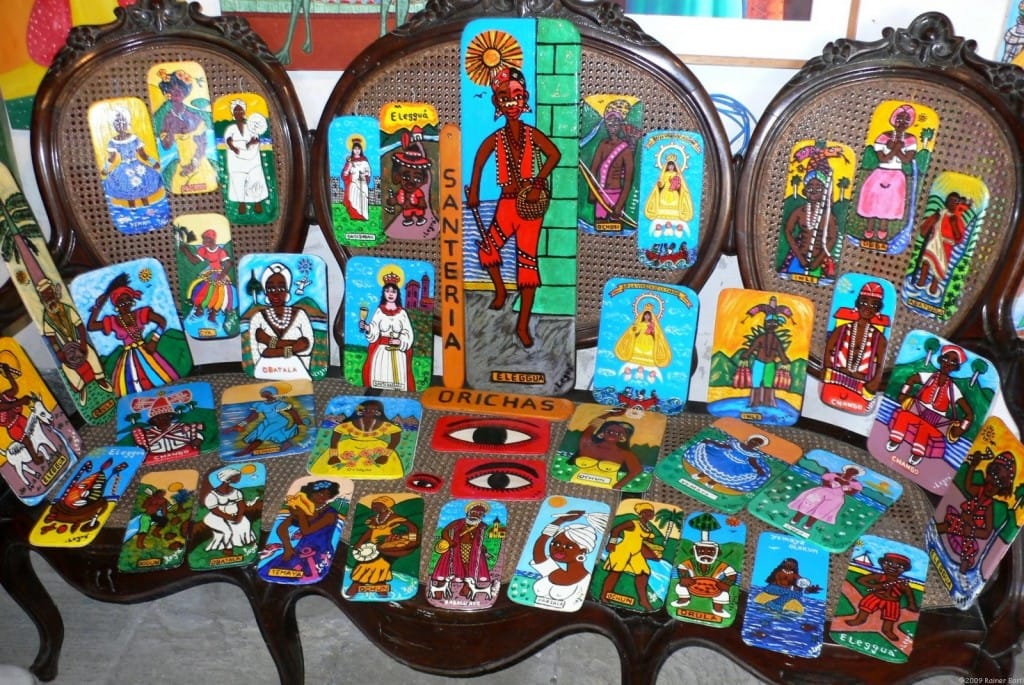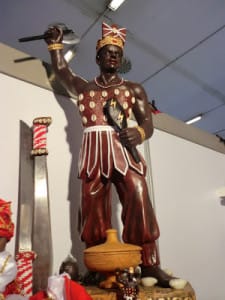
Religion in Cuba: Chango unchained
 A religion brought over by slaves from Africa is becoming more popular
A religion brought over by slaves from Africa is becoming more popular
A SHARP-EYED visitor to Havana and other Cuban cities will notice some odd things: the carcasses of birds strewn at intersections, insignias consisting of a single eye and dagger affixed to doorways and displayed in taxis, people dressed head to toe in white. All are emblems of Santería, a religion with roots in the culture of Yoruba slaves who came to Cuba from Nigeria from the early 18th century. After a period of suppression, it appears to be making a comeback.
Santería is a blending of the Yoruba religion, which acknowledges 401 orishas, or deities, with the Catholicism of the Spanish colonisers. Although at least 60% of Cubans today call themselves Catholics, far fewer are regular churchgoers. Many see no reason not to incorporate Santería rituals into their spiritual lives. A Catholic priest will marry a couple, but a santero might foretell their destiny and, later on, counsel them on how to revive their flagging sex life.
The religion suits Cubans’ easy-going culture. Women can be priests and homosexuals are welcome. Religious services are like a night on the town, though sometimes with animal sacrifice thrown in. At a ceremony in a suburban basement near Havana, Paulo da Silva, a santero in embroidered vestments, flexes from knee to knee to the beat of congo drums in tribute to Chango, the king of dance. He taps the heads of congregants with a bare dagger, and spins them into a dizzy trance. Afterwards he treats himself to a cigar and a tumbler of rum.
Cuba’s communist government became less hostile to religion after the collapse of the Soviet Union in 1991. But faith still carries a stigma. “You’d be stupid to put your religion on a job application,” says a schoolteacher who guides British tourists around Havana. “It would go straight in the bin.”
Data on Cubans’ religious practices are thus hard to come by. But there are indications that Santería is gaining ground along with other cults like Abakuá, an Afro-Cuban version of Freemasonry. The number of non-Catholic sects and their followers has “multiplied day by day” in recent years, says Joel Suárez of the Centro Martin Luther King, an ecumenical group. Participation in the annual San Lázaro pilgrimage to Rincón, the biggest Santería gathering, has increased since the early 1990s.
Mr da Silva attributes Santería’s popularity to national pride, a desire for community and people’s yearning to communicate with their ancestors. When Cuba’s vaunted health-care system fails patients, some find comfort in the traditional remedies that Santería offers. As the country opens up to the United States, Cubans may value more highly expressions of their own culture, says Enrique López Oliva, who writes on religion.
Then there is the role of music. Orishas, a hip-hop group, has produced a string of hits. “We do a bit of Santería,” normally at a friend’s house, says Ricardo Pérez, a reveller outside Don Cangrejo, one of Havana’s top dance clubs. “We play the cajón [a sort of drum], sing a few songs.” Any religion that mixes spirituality and salsa so easily is bound to have a bright future in Cuba.